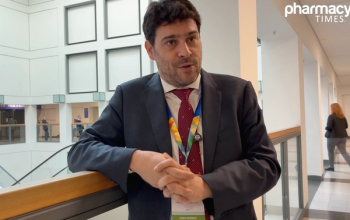
FDA Grants Breakthrough Therapy Designation to BIVV001 for Hemophilia A Treatment
Efanesoctocog alfa is a novel and investigational recombinant factor VIII therapy that is designed to extend protection from bleeding with a once-weekly prophylactic dosing.
The FDA has granted breakthrough therapy designation to efanesoctocog alfa (BIVV001; Sanofi, Sobi) for the treatment of individuals with
Efanesoctocog alfa is an investigational and novel recombinant factor VIII therapy designed to extend protection from bleeding with a once-weekly prophylactic dosing. Additionally, it is the first investigational factor VIII therapy that has been shown to break through the von Willebrand factor ceiling, which imposes a half-life limitation on current factor VIII therapies.
Breakthrough therapy designation is designed to expedite the development and review of drugs in the United States that target life-threatening or serious conditions. The drugs must show preliminary clinical evidence that demonstrates a substantial improvement on clinically significant endpoints over available therapies.
“The breakthrough therapy designation highlights efanesoctocog alfa’s potential to transform treatment for people with hemophilia A by providing higher protection for longer duration. This potential new class of factor VIII therapy represents how we are boldly advancing science to address unmet needs for the hemophilia community,” John Reed, MD, PhD, global head of research and development at Sanofi, said in a statement.
The decision is based on data from the XTEND-1 phase 3 study, which demonstrated that efanesoctocog alfa met the primary endpoints of a clinically meaningful prevention of bleeds in individuals with severe hemophilia A over a 52-week period.
Additionally, the study also met key secondary endpoints, demonstrating that efanesoctocog alfa was superior to prior prophylactic factor VIII replacement therapy in preventing bleeding events based on an intra-patient comparison.
Furthermore, efanesoctocog alfa was well-tolerated, and inhibitor development to factor VIII was not detected. The most common treatment-emergent adverse events were arthralgia, back pain, fall, and headaches.
“This designation supports the innovation of efanesoctocog alfa and acknowledges its potential to fulfill an unmet medical need for people living with hemophilia A. We are committed to transforming lives for people living with rare diseases, and this is a testament to the medical innovation that science can bring,” Anders Ullman, MD, PhD, head of research and development and chief medical officer at Sobi, said in the statement.
Data from the XTEND-1 phase 3 study are expected to be shared at an upcoming medical meeting and will serve as the basis for submission to the FDA mid-year 2022.
Previously, the FDA granted efanesoctocog alfa orphan drug designation in August 2017 and fast-track designation in February 2021.
The European Commission also granted efanesoctocog alfa orphan drug designation in June 2019. Regulatory submission in the European Union will follow availability of data from the ongoing XTEND-Kids pediatric study, which is expected in 2023.
Efanesoctocog alfa is under clinical review, and its efficacy and safety have not been evaluated by any regulatory authorities.
Individuals with hemophilia can experience bleeding episodes that can cause irreversible joint damage, and life-threatening hemorrhages, and pain, according to the statement.
It is a lifelong condition that affects an individual’s ability blood to clot due to coagulation factor deficiency.
Reference
FDA grants efanesoctocog alfa breakthrough therapy designation for hemophilia A. Sanofi. News release. June 1, 2022. Accessed June 1, 2022. https://www.news.sanofi.us/2022-06-01-FDA-grants-efanesoctocog-alfa-Breakthrough-Therapy-designation-for-hemophilia-A
Newsletter
Stay informed on drug updates, treatment guidelines, and pharmacy practice trends—subscribe to Pharmacy Times for weekly clinical insights.























































































































































































































